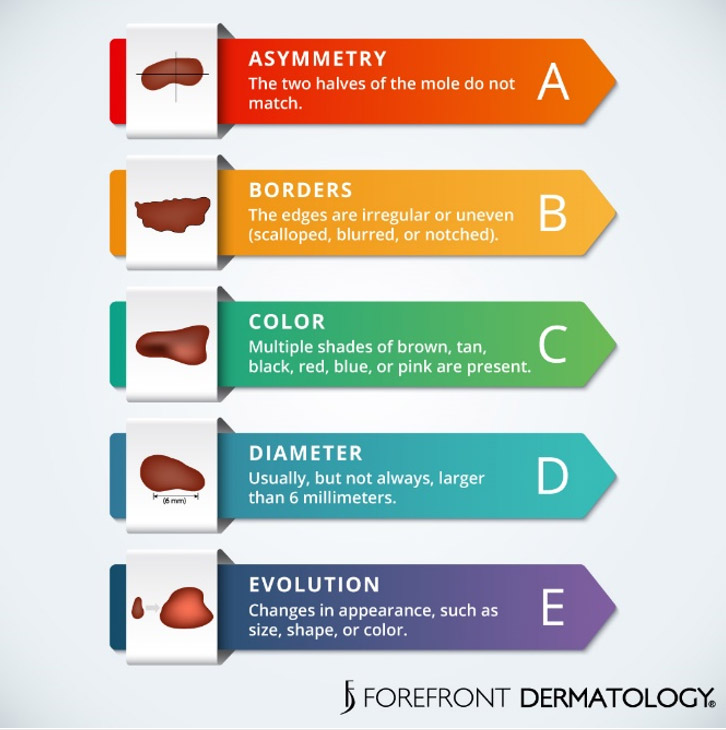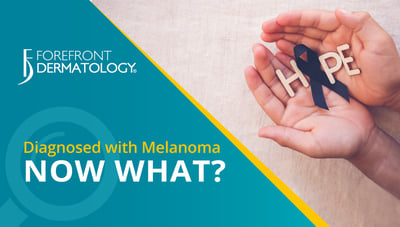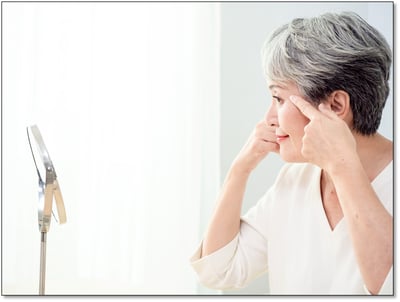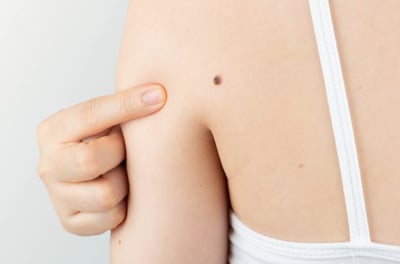
Are you wondering what skin cancer looks like on your face? Is there a spot that is new or changing? For starters, let us just say kudos on paying attention! It is so vital to watch yourself for these things because early detection truly saves lives. Secondly, skin cancer has a variety of appearances so we will need to start by explaining exactly what skin cancer is and the types it can occur as.
What is Skin Cancer?
Skin cancer is an abnormal growth of skin cells. It most often develops on areas of the skin exposed to the sun’s rays. Skin cancer affects people of all colors and races, although those with light skin who sunburn easily have a higher risk. Research has estimated that one in five Americans will develop skin cancer in their lifetime. According to the American Cancer Society, about 3.3 million basal and squamous cell skin cancers are diagnosed in America each year with an estimated 87,000+ new cases of melanoma predicted for 2020.
While rare types of skin cancer do exist, there are four main types of skin cancer:
• Basal cell carcinoma (BCC) is the most common type of skin cancer. BCCs frequently develop in people who have fair skin, yet they can occur in people with darker skin. They appear as a flesh-colored, pearl-like bump or a pinkish patch of skin. The can develop after years of frequent sun exposure or indoor tanning; however, they are more commonly due to intermittent high intensity UV exposure (burns), especially childhood exposure. They are commonly found on the head, neck, and arms, yet can form anywhere on the body, including the chest, abdomen, and legs.
• Squamous cell carcinoma (SCC) is the second most common type of skin cancer. SCC often appears as a red firm bump, scaly patch, or a sore that heals and then re-opens. SCC tends to form on skin that gets frequent sun exposure, such as the rim of the ear, face, neck, arms, chest, and back. Early diagnosis and treatment can prevent this and stop SCC from spreading to other areas of the body.
• Melanoma is a deadly form of skin cancer because of its ability of metastasize to local lymph nodes and other organs. It is estimated that melanoma kills, on average, over 10,000 people in the United States every year. It can develop in an existing mole, but is actually more likely to suddenly develop as a new dark spot on the skin. Early diagnosis and treatment are crucial for all forms of skin cancer, but especially melanoma.
• Merkel cell carcinoma (MCC) is a rare form of skin cancer that presents with a rapidly growing, painless, firm, shiny nodule typically on the head and neck region. MCC is more common in fair-skinned individuals, in immunosuppressed patients, and in patients with B cell malignancies. Early identification is critical because these tumors have a propensity for local recurrence and regional lymph node spread.
What does skin cancer look like on my face?
 While skin cancer can occur anywhere on your body, approximately 85% of cases are located on the head / face and neck, the most sun exposed area of your body year-round. Dermatologists commonly refer to the ABCDE’s when examining your skin. While examining your skin, look for any spots that show Asymmetry, have an irregular Border, vary in Color and have a Diameter that is wider than a pencil eraser. It is also important to monitor skin lesions over time to determine if they have Evolved or changed.
While skin cancer can occur anywhere on your body, approximately 85% of cases are located on the head / face and neck, the most sun exposed area of your body year-round. Dermatologists commonly refer to the ABCDE’s when examining your skin. While examining your skin, look for any spots that show Asymmetry, have an irregular Border, vary in Color and have a Diameter that is wider than a pencil eraser. It is also important to monitor skin lesions over time to determine if they have Evolved or changed.
When wondering what skin cancer looks like on your face it is important to know that Melanoma can occur in a variety of colors including brown, black, red, blue, or purple. These spots can be flat or raised and can bleed easily. Non-melanoma skin cancer, also known as basal and squamous cell carcinoma, typically appear as small, pearly, or pale bumps or as dark red patches that can be raised, flat or scaly in texture.
Early Detection Saves Lives
Especially in the case of melanoma, early diagnosis can be the difference between life and death. According to American Cancer Society research, if melanoma is caught in stage one, the 5 year survival rate is 97%. Late detection survival rates can be as low at 15%. After examining your skin, if any spots trigger a question on the ABCDEs, it is vital to be seen by your local dermatologist as soon as possible. Find a dermatologist near you today.





